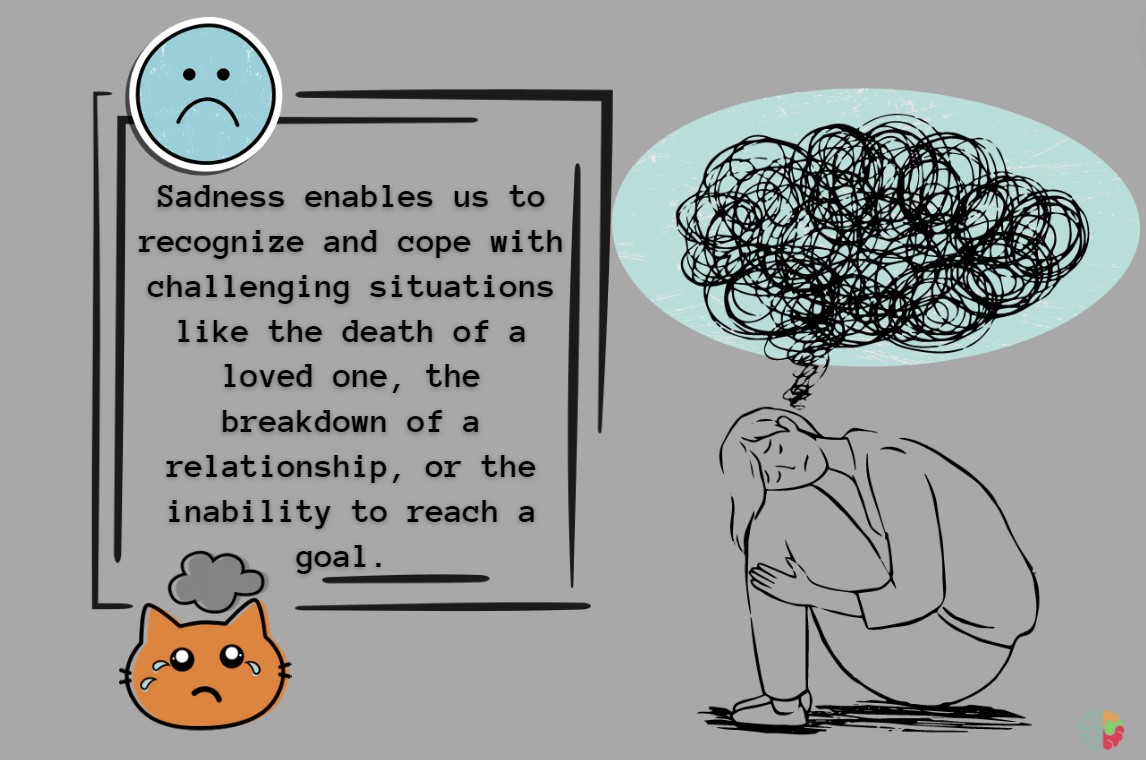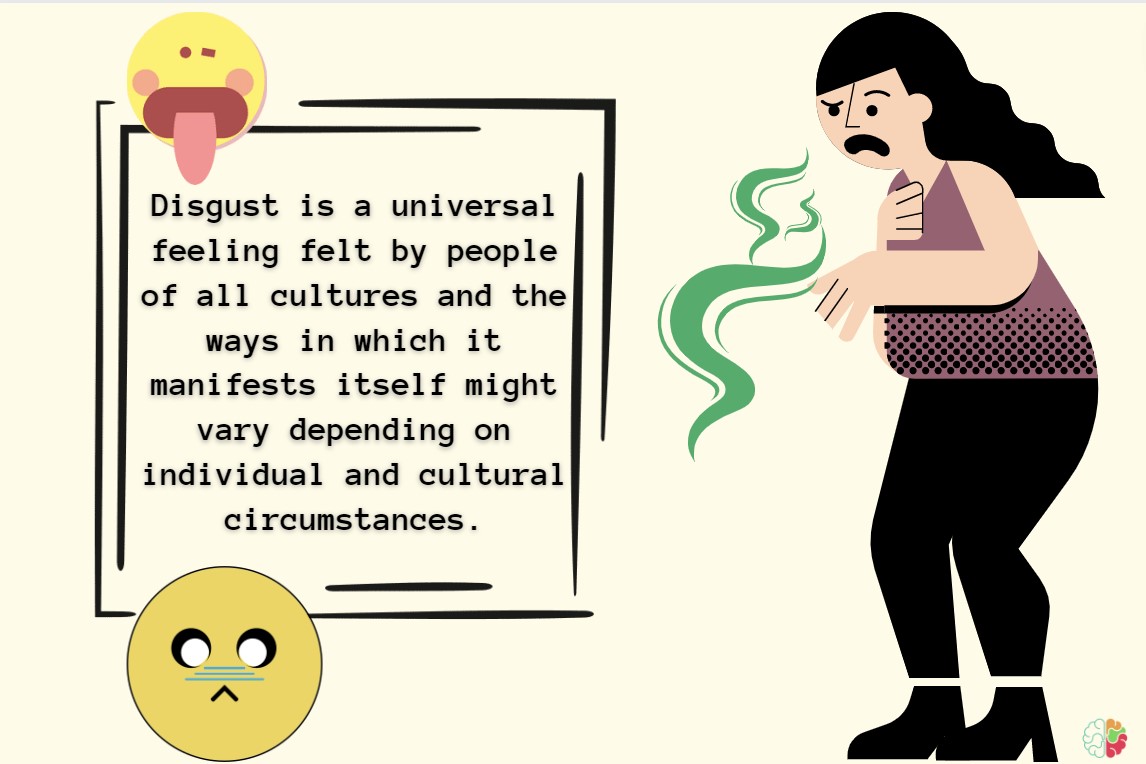Table of Contents
Emotions are an intrinsic part of the human experience, shaping our perceptions, actions, and interactions with the world around us.
They add depth, color, and richness to our lives, making each moment uniquely meaningful.
Among the wide spectrum of emotions, love, happiness, sadness, anger, fear, surprise, and disgust stand out as fundamental and recognizable experiences that shape our daily encounters.
The way we feel has a big impact on how we act, think, and live in general.
We could get crucial new views on our own circumstances and interpersonal interactions by understanding the nature and relevance of these emotions.
We might be able to better regulate these feelings and keep up our emotional health if we have a better grasp of them.
But what is the emotion scale? Here is the best definition from McGraw Hill Education:
Emotion scales are tools that measure the level of intensity of an individual’s emotions and feelings. These can range from simple rating scales to complex psychometric instruments. They are often used in research and therapy to help individuals identify and regulate their emotions.
Now throughout the following sections, we will explore each emotion in detail, unraveling its characteristics, effects, and significance in our lives.
We will examine how joy brings happiness and contentment, how sadness fosters introspection and growth, how anger empowers us to assert boundaries, how fear serves as a protective mechanism, how surprise adds novelty and excitement, how disgust helps us avoid harm, and how love encompasses deep connections and affection.
7 Different Types Of Emotion Scales
1. Happiness
An overall feeling of joy, satisfaction, and well-being is brought on by happiness.
It is a feeling of well-being that can range in intensity from a momentary burst of happiness to a profound and enduring sense of contentment.
Pleasant memories, accomplishments, and wholesome relationships are frequently linked to happiness.
Dopamine, serotonin, and endorphins—neurotransmitters that support sensations of pleasure and happiness—are released by our bodies when we experience joy.
These substances provide a positive feedback loop that encourages the actions and ideas that bring us delight.
It’s crucial to remember that what makes us joyful depends on our internal feelings and thoughts in addition to the external conditions.
There are several factors that contribute to happiness, and each person’s factors will be very different.
Achieving individual objectives or pursuing one’s hobbies may provide satisfaction to certain people.
Others could find satisfaction in activities that give them a feeling of fulfillment and purpose, time with loved ones, or quality time spent together.
Additionally, it has been demonstrated that showing appreciation, and compassion and practicing mindfulness increases happiness and general wellbeing.
Developing self-awareness and making a conscious decision to think and act favorably are prerequisites for experiencing pleasure.
Being grateful, pursuing our passions, cultivating wholesome relationships, and attending to our emotional and physical needs are a few examples of how to achieve this.
We may lead better, more satisfying lives if we prioritized pleasure and spent money on things that reflect our interests and ideals.
You might also enjoy: Monk Mode: What Is It? 10 Ways To Implement It
2. Sadness
All of us go through periods of sadness at various times throughout our lives. Loss, disappointment, or sadness all naturally elicit this reaction.
From a passing sensation of melancholy to a strong and overwhelming sense of grief, sadness can take on many different intensities.
Even while sorrow is sometimes thought of negatively, it really plays a crucial role in our mental health.
When we experience sadness, our bodies and minds go through a range of physiological and psychological responses.
We may feel a heaviness in our chest, tears welling up in our eyes, or a general sense of low energy and withdrawal.
These physical manifestations of sadness are our body’s way of processing and releasing emotional pain.
Sadness enables us to recognize and cope with challenging situations like the death of a loved one, the breakdown of a relationship, or the inability to reach a goal.
It offers us the chance for contemplation and introspection, allowing us to take use of our experiences to evolve.
Allowing ourselves to completely experience and express our pain can help us move closer to recovery and ultimately acceptance.
It is important to note that sadness is a temporary emotion and should not be confused with clinical depression, which is a prolonged and pervasive state of sadness and hopelessness.
If feelings of sadness persist for an extended period and significantly interfere with daily functioning, it is essential to seek professional help and support.
If you haven’t seen this before, I suggest you watch it. Inside Out is a great animation about our feelings and helps us realize why sadness is an important emotion:
You might also enjoy: Self-Control is Strength. Calmness Is Mastery. You – Tymoff
3. Anger
In response to perceived threats, injustice, or the transgression of personal boundaries, the strong and complex emotion of anger may surface.
It is a normal and instinctual reaction that can manifest as anything from moderate annoyance to ferocious wrath.
Even while anger frequently carries a negative connotation, it’s vital to realize that rage is not always an unpleasant emotion.
The effects of our anger on both ourselves and others depend on how we express it and control it.
When we experience anger, our bodies undergo physiological changes.
Our heart rate and blood pressure increase, adrenaline surges through our system, and our muscles tense up.
This physical response prepares us for action, as anger is closely linked to our fight-or-flight response.
Anger can motivate us to assert ourselves, set boundaries, and address situations that we perceive as unfair or threatening.
However, unchecked or overwhelming anger may be harmful to our relationships and well-being.
It might result in rash and violent actions that hurt us and those around us.
Therefore, it is essential to cultivate constructive means of suppressing and expressing rage.
One effective strategy for managing anger is to practice self-awareness and identify the underlying causes and triggers.
Understanding what specifically triggers our anger can help us develop strategies to prevent or minimize its occurrence.
Additionally, learning and practicing techniques such as deep breathing, mindfulness, and relaxation exercises can help us calm ourselves in moments of anger.
You might also enjoy: Top 21 Personal Development Blogs in 2024
4. Fear
Our survival and overall well-being are fundamentally impacted by the sense of fear.
It is a natural reaction to a perceived threat, danger, or damage.
Our bodies and minds undergo a sequence of physiological and psychological changes in response to fear-provoking conditions that are meant to get us ready for future threats.
Fear activates the sympathetic nervous system, which causes a rise in heart rate, fast breathing, alertness, and an adrenaline rush.
These actions are a component of the “fight-or-flight” reaction, an evolutionary adaptation that enables humans to act swiftly in potentially hazardous circumstances.
While fear is often associated with negative experiences, it serves a crucial purpose in keeping us safe.
It prompts us to assess risks, take necessary precautions, and avoid potential harm.
Fear can be instinctive, such as the fear of heights or predators, or it can be learned through past experiences or cultural influences.
However, it is important to distinguish between rational fear and irrational fear.
Rational fear is a normal response to genuine threats, whereas irrational fear involves an exaggerated or unfounded perception of danger.
Irrational fears can manifest as phobias or anxiety disorders and may require professional intervention and treatment.
You might also enjoy: 30 Best Atomic Habits Quotes To EMPOWER Your 2024
5. Surprise
Surprise is a transient and often delightful emotion that arises from unexpected or unforeseen events or circumstances.
It is characterized by a brief pause, followed by a quick reaction.
Surprise adds a sense of novelty, excitement, and unpredictability to our lives, keeping us engaged and alert.
When we experience surprise, our brains undergo a rapid cognitive process as we try to make sense of unexpected situations.
This cognitive response involves a momentary interruption of our mental schema and the need to reassess our understanding of the world.
The impact of surprises can range from brief enjoyment to significant life-altering experiences, and they can take the form of minor everyday occurrences or huge life events.
Surprises may take on many different shapes and settings.
They can be enjoyable, like getting a surprise present or running into an old friend by chance.
On the other side, unpleasant or stunning shocks are also possible, like a sudden piece of bad news or an unanticipated setback.
Regardless of the nature of the surprise, it often sparks emotions such as joy, curiosity, confusion, or even fear.
Embracing surprise can foster adaptability and open-mindedness.
It challenges our preconceived notions and allows us to see things from different perspectives.
Surprises can inspire creativity, as they present us with new information and possibilities that we may not have considered before.
They break the monotony of routine and inject spontaneity and freshness into our lives.
Surprises also have social implications.
When we surprise others in a positive way, it can strengthen bonds, deepen relationships ,and create lasting memories.
Surprises can be a source of shared laughter, joy, and connection among friends, family members or romantic partners.
They have the power to make moments more memorable and create a sense of anticipation and excitement in our relationships.
You might also enjoy: 10 Reasons Why YOU Attract What You Are (2024)
6. Disgust
Disgust is a complicated feeling that develops when we are exposed to specific stimuli or circumstances that we find unpleasant, repugnant, or even dangerous to our bodily or moral well-being.
It acts as a safeguard, assisting us in avoiding potential dangers or sicknesses.
Disgust is a universal feeling felt by people of all cultures and the ways in which it manifests itself might vary depending on individual and cultural circumstances.
When we experience disgust, our bodies and minds react with a variety of physiological and behavioral responses.
These responses can include facial expressions of disgust, feelings of nausea or physical discomfort, and the urge to avoid or distance ourselves from the source of disgust.
Disgust is closely linked to our sense of taste and smell, as these senses play a vital role in detecting potentially harmful substances.
Disgust can be triggered by a wide range of stimuli, including foul odors, rotten food, bodily fluids, or morally objectionable behaviors.
It helps us maintain personal hygiene, avoid contaminated substances, and steer clear of behaviors or situations that may compromise our well-being.
Disgust also plays a role in shaping our moral judgments and societal norms, as certain behaviors or ideas may elicit a strong disgust response based on cultural or personal values.
Although disgust is a normal and adaptive feeling, it’s crucial to understand that biases and preconceptions can also have an impact on it.
Due to societal pressures or cultural training, people may feel revulsion toward particular social groupings or behaviors.
It is vital to critically assess our own revulsion and make sure it is rooted in real grounds rather than irrational preconceptions.
Recognizing and comprehending disgust’s causes as well as judging them rationally and fairly are necessary for managing disgust.
It is crucial to distinguish between instances where there are actual risks to our safety and those where our revulsion could be influenced by prejudices or societal conditioning.
The detrimental effects of disgust on our interactions with others can also be lessened by cultivating empathy and open-mindedness.
You might also enjoy: 7 Ways to Do the Right Thing When No One is Looking
7. Love
Love, which includes a strong attachment to, connection with, and caring for someone or something, is a strong and transformational emotion.
It is frequently characterized as a deep sense of warmth, affection, and dedication.
Numerous manifestations of love exist, including platonic love, family love, romantic love, and even love for certain pursuits.
When we experience love, several physiological and psychological changes occur in both our bodies and brains.
Our brains release oxytocin, dopamine, and serotonin, among other chemicals, to make us feel good, connect with people and be joyful.
We may feel emotional well-being, joy, and happiness when we fall in love.
Frequently, this is followed by the urge to look after and protect the person we are in love with.
Romantic love is perhaps the most commonly recognized form of love.
It involves an intense emotional and physical attraction towards another person.
Romantic love is often characterized by infatuation, passion, and a deep desire for intimacy and connection.
It can bring about feelings of euphoria, excitement, and a sense of completeness when shared with a compatible partner.
Platonic love, on the other hand, refers to a deep affection and bond between friends or individuals who share a non-romantic connection.
It involves genuine care, trust, and support for one another, often transcending boundaries of time and distance.
Platonic love is based on mutual respect, shared values, and a sense of companionship, and it can be equally fulfilling and meaningful.
Familial love encompasses the bond between family members, such as the love between parents and children or between siblings.
It is a profound and unconditional love that is often characterized by a strong sense of loyalty, protection, and sacrifice.
Familial love provides a sense of belonging, support, and emotional security, forming the foundation of many individuals’ lives.
Beyond personal relationships, love can also extend to other aspects of life, such as a love for hobbies, passions, or creative pursuits.
This form of love involves a deep connection and devotion to activities or interests that bring us joy, fulfillment, and a sense of purpose.
It can be seen in the dedication and enthusiasm individuals have for their craft or the commitment they show to their chosen path.
We suggest you listen to this podcast which talks about how to master your emotions:
Conclusion
Emotions and Emotion Scales are an integral part of being human, shaping our perceptions and experiences.
They provide us with valuable insights into ourselves and others, influencing our decisions, behaviors, and overall quality of life.
Understanding and categorizing emotions through the use of emotion scales can help us navigate our emotional landscape more effectively.
It is essential to remember that emotions are intricate and diverse and that every person will experience and express them in various ways.
In this post, we looked at seven main sorts of feelings that people frequently have: happiness, sadness, anger, fear, surprise, disgust, and love.
Each of these emotions has distinctive traits, causes, and effects on our well-being.












